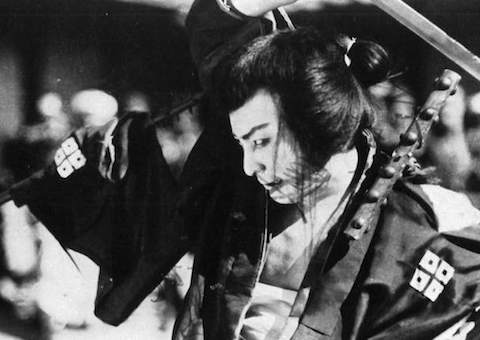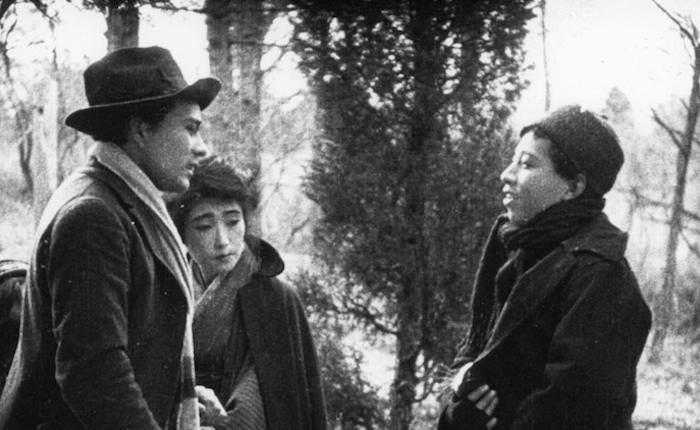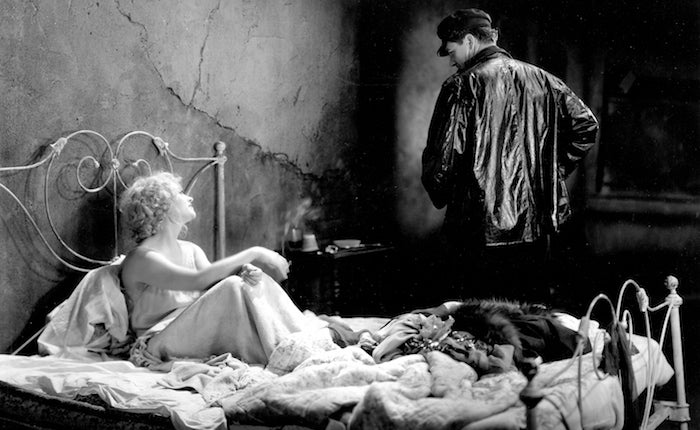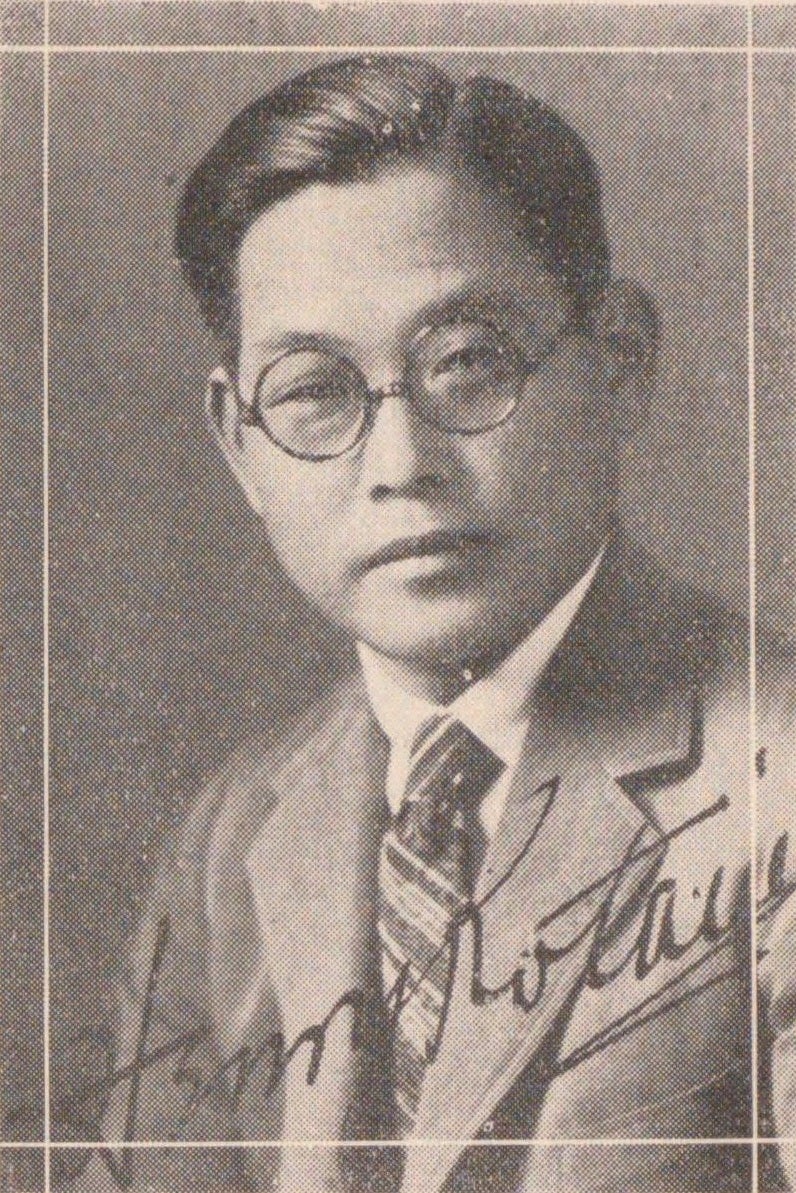
Screening at the Billy Wilder Theater through April 30, Hollywood and Holy Wood: Silent Cinema Connections Between Los Angeles and Japan explores the transnational nature of cinema and the stories, techniques and talents that were exchanged between the two film industries. We interviewed series curator and film scholar Daisuke Miyao, who will join us on April 30 for a talk and screening focused on the career of Japanese-American film pioneer Henry Kotani.
When we look at film in the 1920s, we see distinct national cinemas taking shape, the most prominent examples being the U.S., Germany, Russia and France. What was happening in Japan during this period?
The 1920s was the time when cinema became a mass medium in Japan, especially during the period of rapid reconstruction of the urban space of Tokyo after the Great Kanto Earthquake in 1923. On the one hand, industrialization of cinema was happening. Shochiku, the leading kabuki company, entered the film business. Initially, Shochiku modeled itself after Hollywood studios by hiring technicians from Hollywood – cinematographer Henry Kotani was one of them – and adopted the star system. Eventually, Shochiku decided not to directly imitate Hollywood but maintain their kabuki-influenced styles, particularly in the area of lighting. Still, gendaigeki, or the contemporary drama genre, that Shochiku initiated captured the transformation of urban culture and also helped establish film fan culture. On the other hand, there were a number of experiments in cinema that challenged the industrialization. Jidaigeki, or the period drama genre, was a typical example. Even though jidaigeki is usually set in the premodern period of Japan (before the Meiji Restoration in 1868), its style has almost nothing to do with the theatrical convention of kabuki. Its speedy actions, realistic swordfights, expressive cinematography, and rapid editing – these characteristics of jidaigeki rather stem from Hollywood swashbuckler films starring Douglas Fairbanks, as well as a new theatrical group, Shinkokugeki (New National Theater). In addition to jidaigeki, there were other experimental works that were inspired by European avant-garde filmmaking, including German Expressionism and French Impressionism.

Souls on the Road (dir. Minoru Murata, 1921)
Early Hollywood found inspiration in other arts, like highbrow theater and vaudeville. How was early Japanese cinema influenced by Japan’s own cultural traditions?
In the first decades of the 20th century, cinema was not clearly separate from preexisting theatrical entertainment in Japan. Both filmmaking and film exhibition were under the strong influence of kabuki and shinpa (new school, or modern drama influenced by traditional kabuki styles). Cinema attracted audiences, not only because of the newness but also because of “the thrill of experiencing what was known not to be theater become like theater,” like other forms of misemono (sideshow) entertainment, such as gento (magic lantern) and ikiningyo (living dolls), as film historian Aaron Gerow puts it. Benshi was also a part of such misemono tradition. From the very first showing of motion pictures in Japan in 1896 until the end of the silent era in 1939, benshi always supplied a verbal component to the screenings. Benshi were huge cultural stars of the time. The popularity of benshi made it difficult to replace them with talkies, even when there were people who initiated the so-called pure film movement (jun eigageki undo) and tried to distinguish cinema from such theatrical traditions, in order to make Japanese-made films viable to the international standard and fight back against the pressure that the Hollywood market put on the home front in the 1920s.

The Docks of New York (dir. Josef von Sternberg, 1928)
The Hollywood directors in this series – Frank Borzage, D.W. Griffith, Josef von Sternberg – were masters at using the expressive power of lighting. How did Japanese filmmakers appropriate Hollywood-style cinematography?
“Clarity first, story second” (ichi nuke, ni suji). This was a slogan introduced in the early decades of the 20th century by Makino Shozo, “the father of Japanese cinema.” The expression “clarity first” indicates the importance of light and lighting in the early period of filmmaking in Japan. However, the emphasis was not necessarily on sensitive tones or creative nuances and contrasts between light and shadow. Instead, what was emphasized was brightness, or “simply flat” frontal lighting, that would make everything as “cleanly and clearly” visible to the spectator as it is on the stage of kabuki. Also, the images should be clearly viewable to the benshi, who narrated the story and dialogue of a film for the spectators. When Shochiku entered the film business by modeling itself after Hollywood studios, they hired cinematographer Henry Kotani from Hollywood. Kotani worked under Cecil B. DeMille and Alvin Wyckoff who had initiated the expressive use of lighting in Hollywood, the so-called Lasky lighting, or Rembrandt chiaroscuro. What Kotani brought to Japan was the expressive Lasky lighting as well as effective use of backlighting, which would become the default norm in Hollywood in the 1920s, to secure an illusion of roundness. Unfortunately, Shochiku decided not to pursue this route and went back to the “clarity first” convention. Instead, the jidaigeki genre as well as experimental films, including A Page of Madness (Kurutta ichipeiji, 1926), incorporated Hollywood and European-style cinematography in the 1920s.
Light of Sympathy (dir. Henry Kotani, 1926)
On April 30 you’ll discuss pioneering filmmaker Henry Kotani, who began as a cinematographer for Lasky productions. What drew you to him as a research subject?

I encountered the name of Henry Kotani when I was writing my first book, Sessue Hayakawa: Silent Cinema and Transnational Stardom (Duke University Press, 2007). I became instantly attracted to Kotani’s career. I asked myself why a Japanese person was able to work as a cinematographer in Hollywood in such an early period, especially during the period that witnessed nativism and xenophobia in the United States. I started my research on Kotani and found that he returned to Japan in 1920 to join the newly constructed Kamata studio of Shochiku Kinema Company. Shochiku’s Kamata studio was established to modernize Japanese cinema by adopting Hollywood’s techniques, including artificial lighting. Kotani’s Hollywood techniques should have had a huge impact. However, Shochiku fired Kotani after only a few years. Why? That was the beginning of my quest of Kotani’s work. In addition, I really wanted to work on cinematography and lighting because cinema is a medium of light. Cinema does not exist without the electrical light beam that passes through the celluloid strip to throw an image onto a screen before a viewer. Even before the process of projection, the production of moving photographic images is a construction in light. The title of Kotani’s film that will be screened in this series is perfect in this sense: Light of Sympathy!
Hollywood and Holy Wood: Silent Cinema Connections Between Los Angeles and Japan takes place at the Billy Wilder Theater from April 14 - 30, 2017.
—Jennifer Rhee, Digital Content Manager
< Back to the Archive Blog






 Mobile Navigation
Mobile Navigation

